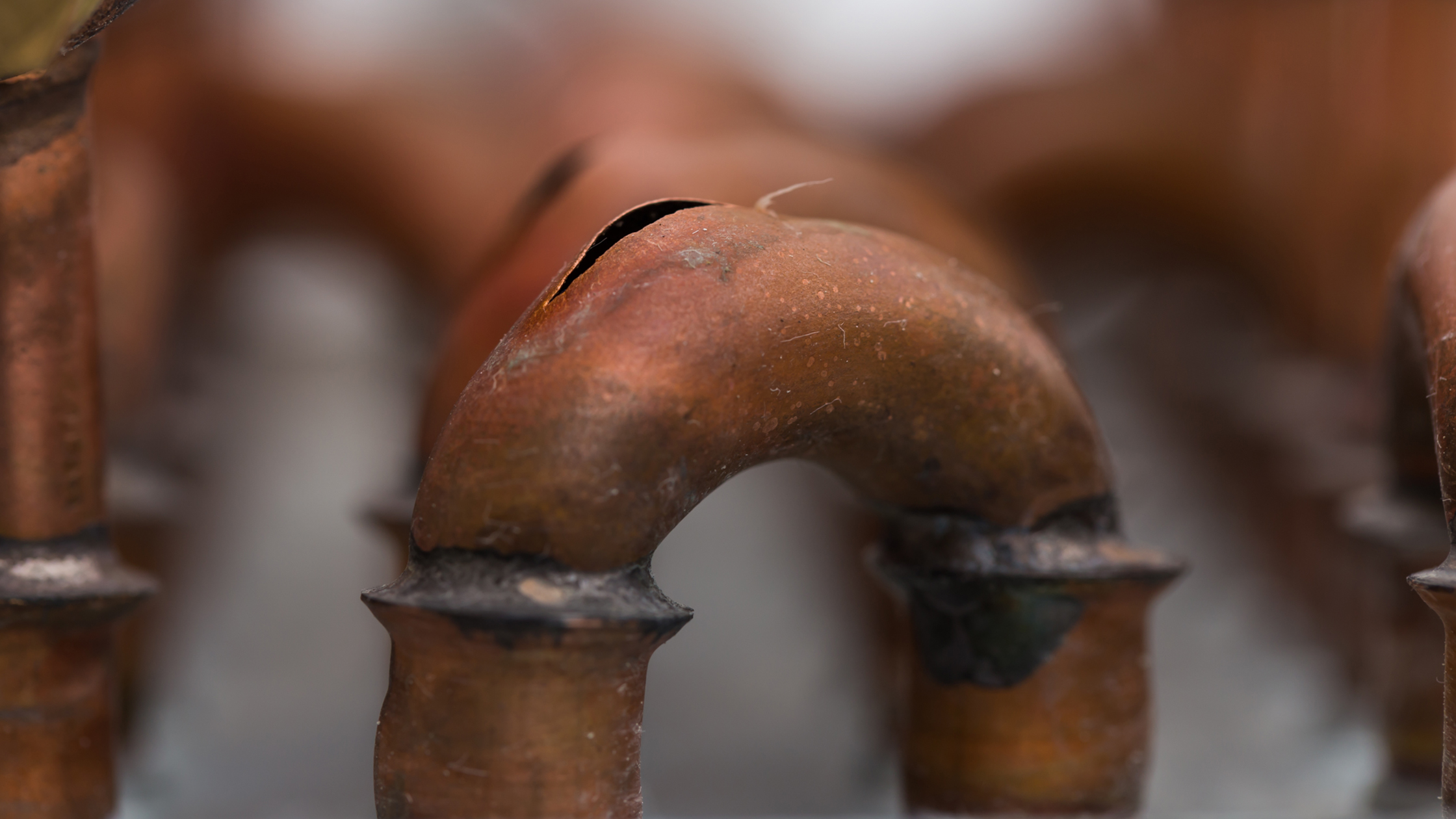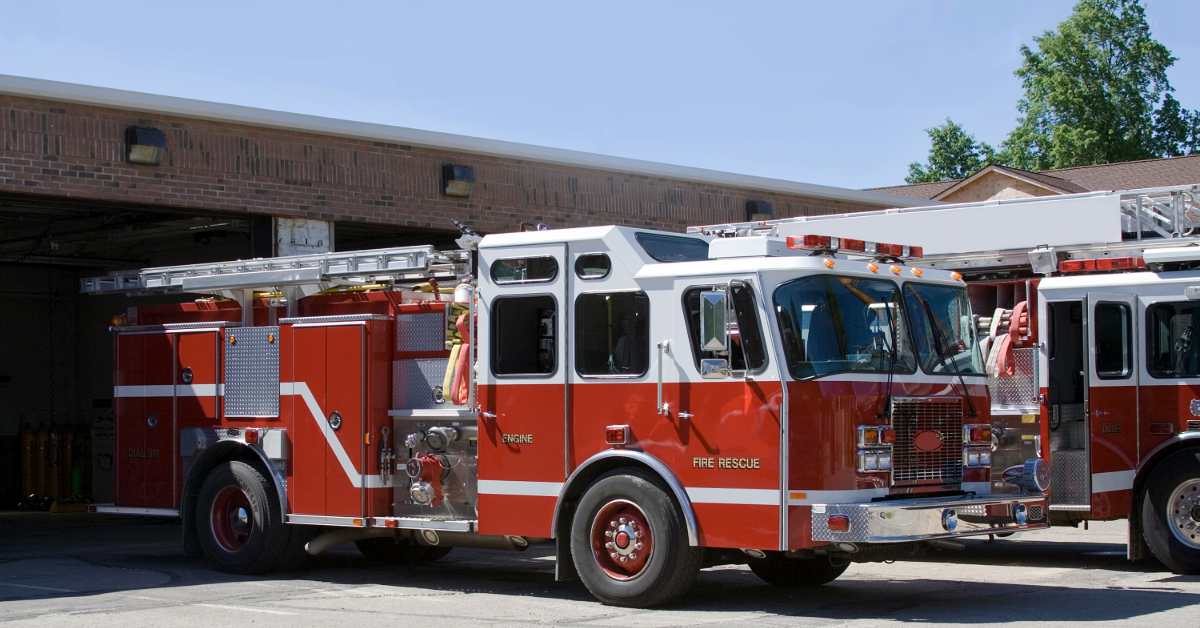Prioritize these best practices to help reduce the likelihood this winter and keep your community’s critical services running smoothly.
Temperatures are dropping, the leaves are falling and the days are getting shorter—meaning winter will be here in no time. With the changing of the seasons, new risks need to be considered—and one you’ll need to keep an eye out for is frozen pipes.
When freezing happens, there is the potential for pipe bursts, and the aftermath may include significant property damage, costly repairs and potential interruptions to your operations—and we’ve seen this firsthand. Matt Olphin, Director of Client Risk Solutions for Glatfelter Public Entities, states, “We have too many claims resulting from severe cold and freezing. It doesn’t matter where you call home—it seems like all parts of the country are experiencing severe weather that includes freeze events. Just look at Texas and the historical freeze event that occurred in 2021. Preparation is key—ask “what if” questions, run through response scenarios, make plans to address emergencies, practice and keep those plans up to date.”
It’s important to take this risk seriously and take the necessary steps to help prevent pipe freeze—if not, you could face devastating outcomes. And with the tremendous task of supporting your community, the last thing you need to be worried about are issues that could’ve been completely avoided.
Luckily, there are steps you can take to help minimize the chance of this happening. Keep these 15 best practices in mind to help minimize the risk of frozen pipes this winter:
- Heat – maintain heating systems throughout buildings to normal levels.
- Insulation + Pipe Heating – insulate pipes, and when providing heat tracing for pipes, make sure it’s approved by a Nationally Recognized Testing Laboratory (NRTL) such as FM or UL.
- Emergency Power – to keep pipe specific heat tracing running, make sure emergency power supplies are operational, are regularly exercised and tested under full load, and supply power to areas that need heat.
- Shut Off + Drain – turn off and drain water from all systems in areas where you know there would be an issue or no heat.
- Sensors – work with your current fire and security alarm providers to determine if temperature and water sensors can be added where problems have occurred, or in main supply areas.
- Valves – have signage indicating the location of all water shut off valves so staff can shut off water quickly and reduce water damage in the event of a pipe break.
- Concealed spaces, attics + crawl spaces – identify all of these areas and assess them for pipes and vulnerability to freezing.
- Windows – at the end of each day, conduct window checks and communicate with staff to ensure windows are tightly closed when severe cold weather is forecasted
- Preventative Maintenance (PM) – include these preventative measures in your PM program to help ensure they’re reviewed and addressed if needed.
- Fire Protection Rooms – all windows, venting louvers and doors located in these areas should be functional, closed and in good condition. Ensure heating sources are working properly as well.
- Wet Sprinkler Systems – heat for wet pipe sprinkler piping areas should be sufficient. Provide approved supplemental heating if needed.
- Dry Sprinkler Systems – drain water and condensation in low points and drains in dry sprinkler systems.
- Fire Pumps – check test header pipes to ensure all water is drained.
- Unoccupied and Vacant Buildings – these best practices should be applied to buildings not being used regularly as well. It’ll be important to conduct routine self-inspections to check on their condition.
- Training – provide routine training on all of the above to the Buildings + Grounds staff. Consider this for all employees too.
Don’t ignore the impact winter weather can have on your buildings. As cold weather arrives, pipe freezing can be a serious threat, so take these precautionary measures to help prepare yourself, reduce your risk and avoid the costly aftermath.

Richie Almeida, Integrated Marketing Specialist
Richie is an avid movie goer with an addiction to Sour Patch Kids. If he isn’t at the movies, he is at the gym or on a hike trying to make up for his bad eating habits.
DISCLAIMER
The information contained in this blog post is intended for educational purposes only and is not intended to replace expert advice in connection with the topics presented. Glatfelter specifically disclaims any liability for any act or omission by any person or entity in connection with the preparation, use or implementation of plans, principles, concepts or information contained in this publication.
Glatfelter does not make any representation or warranty, expressed or implied, with respect to the results obtained by the use, adherence or implementation of the material contained in this publication. The implementation of the plans, principles, concepts or materials contained in this publication is not a guarantee that you will achieve a certain desired result. It is strongly recommended that you consult with a professional advisor, architect or other expert prior to the implementation of plans, principles, concepts or materials contained in this publication.
This blog post may contain the content of third parties and links to third party websites. Third party content and websites are owned and operated by an independent party over which Glatfelter has no control. Glatfelter makes no representation, warranty, or guarantee as to the accuracy, completeness, timeliness or reliability of any third party content. References to third party services, processes, products, or other information does not constitute or imply any endorsement, sponsorship or recommendation by Glatfelter, unless expressly stated otherwise.
Related posts
An accident can leave those involved reeling, especially if they’re unsure how to proceed. Make sure your drivers know what to do if something goes wrong.
Whether you’re driving a van, work truck, an emergency vehicle, or another larger vehicle, several different accidents and injuries could result from improper backing practices.
In the event of inclement weather, make sure your drivers are prepared for whatever comes their way and can help prevent an accident from happening.







Submit a Comment